Can Thermofoil Cabinets Be Peeled And Painted? (Find Out Now!)

Those kitchen cabinets you installed several years ago are starting to show the wear and tear of family use. You notice that the corners and edges of the thermofoil coverings are peeling and bubbling. You wonder if the unsightly thermofoil covering can be peeled away from the underlying material and repainted for a fresh new look?
Thermofoil cabinets feature a substrate material covered with a plastic-like material glued and heat-sealed to the surface. It is possible to remove the thermofoil material. In most cases, the underlying material is medium density fiberboard. This MDF material can be prepped and painted like any other wood product. The most effective technique for removing the thermofoil is a heat gun.
The thermofoil covering on your kitchen cabinets performs more functions than just adding decorative color. The plastic material of the thermofoil covering protects the MDF substrate from moisture and damage. This, and other considerations, should be carefully weighed before you start removing the thermofoil.
Related Guide: Can You Paint Thermofoil Cabinets?
Do You Need to Hire a Cabinet Refinishing Contractor?
Get free, zero-commitment quotes from pro contractors near you.

What is Thermofoil?
In the simplest terms, thermofoil is a thin plastic sheet formed over the face and profile of cabinets, especially the doors. This thin plastic sheeting is heated to allow the covering to mold the shapes and profiles on the door face. An adhesive is applied between the plastic and the door face.
Thermofoil is attractive to cabinet manufacturers for several reasons.
- Thermofoil can be quickly and easily applied to a wide range of surface profiles and designs.
- The thermofoil protects the MDF substrate from moisture, spills, and other damage
- A wide array of colors, textures and finishes are available to the manufacturer
However, there are some downsides to thermofoil that should be considered.
- Thermofoil is easily damaged by heat and doesn’t do well where heat-generating appliances are placed close to the thermofoil kitchen cabinets.
- Any water or moisture that gets under the thermofoil can damage the substrate material and cause the thermofoil to peel or bubble.
- The thermofoil material is relatively soft and can be easily scratched.
Thermofoil cabinets can make a kitchen remodel project less expensive and produce an attractive look. However, the durability of thermofoil cabinets may be less than wood-painted cabinets or other surface materials.
What is the Best Way to Peel Thermofoil from My Cabinet Doors?
Applying heat to the surface of the thermofoil on your cabinet doors is the best method. There are several things to keep in mind as your begin to remove the thermofoil from your kitchen cabinet doors.
- Work Safely – Working safely as you peel away the thermofoil from your cabinet doors is a major consideration. Always wear safety glasses to protect your eyes. Gloves are needed to handle the hot plastic and for protection around the heat gun. Work in a well-ventilated area. Heating the plastic and adhesive can cause fumes that may irritate your nose and eyes.
- Gather your Tools – Before you start any project, ensure that you have all the supplies and tools you need for the job. Nothing raises frustrations faster than having to constantly stop and search for the right tool or gather materials. In this case, you need the following:
Your safety equipment such as safety glasses and glovesA heat gun or high-power hairdryerA scraper or razor blade knifeA trashcan to dispose of the thermofoil as it is removed
- Heat the Edge of the Cabinet Door – Begin at the edge or corner of your cabinet door. Carefully heat the thermofoil with your heat gun to loosen the adhesive. Use your scraper or razor blade knife to lift the edge as the glue softens. Don’t force anything. Work slowly and carefully.
- Work in Small Areas to Free the Thermofoil – Work your way across the cabinet door heating the thermofoil to free the adhesive underneath. You may use wax paper or thin wood strips on larger doors or surfaces to keep the thermofoil from re-attaching to the glue surface.
- Don’t Hurry – Don’t try to hurry the process. The thermofoil should lift easily from the surface when the glue is heated. If you apply too much pull to the thermofoil, you can rip chunks of the MDF from the surface of the cabinet door. This can lead to more work when you apply a new finish.
If your cabinet doors are like most, the thermofoil wraps the entire door. You must not only peel away the surface covering but also the edge and back cover.
There is Still Glue on the Door After I Peel the Thermofoil Away
This is one of the problems with trying to peel thermofoil and repaint the MDF substrate. MDF is a porous material. The glue used to apply the thermofoil is hard to remove from the surface before you paint. Remember that MDF will absorb moisture of any kind, so any liquid cleaner should be avoided if possible.
A light sanding of the surface of the MDF may remove the adhesive and allow you to prime the MDF before painting. Consult with your paint dealer about the best method of priming the MDF where residual adhesive may exist.
What is the Difference Between Laminate Cabinets and Thermofoil Cabinets?
Technically speaking, thermofoil is a type of laminate. In general, laminates refer to the materials used and the method of bonding the material to the cabinet. Laminates can include products like Formica™ and other harder and thicker products.
Thermofoil is a PVC vinyl material that uses heat and adhesives to form and bond the surface coverings. This ability to conform to different profiles makes thermofoil very popular as a covering for kitchen cabinet doors. Unlike the harder laminate materials, thermofoil easily molds to complex curved shapes on many cabinet door designs.
Do You Need to Hire a Cabinet Refinishing Contractor?
Get free, zero-commitment quotes from pro contractors near you.

Refinishing Thermofoil Cabinets
It is possible to peel away thermofoil coverings on kitchen cabinet doors. However, getting the thermofoil covering off is just the beginning of the project. Removing residual adhesive and preparing the MDF surface for painting can be a larger and more demanding project. MDF substrate kitchen cabinet doors must be properly sealed, primed and painted to protect them from moisture and spills.

Dennis is a retired firefighter with an extensive background in construction, home improvement, and remodeling. He worked in the trades part-time while serving as an active firefighter. On his retirement, he started a remodeling and home repair business, which he ran for several years.
More by Dennis Howard



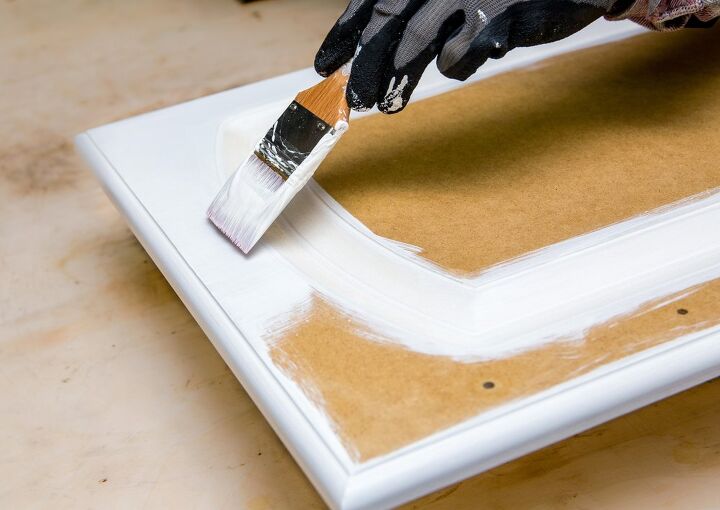






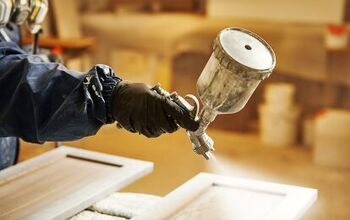
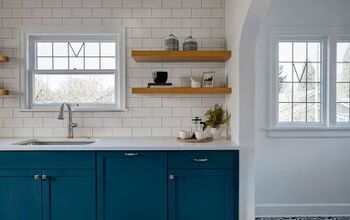
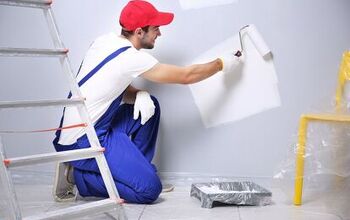
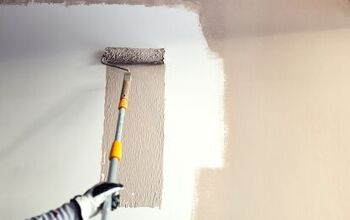
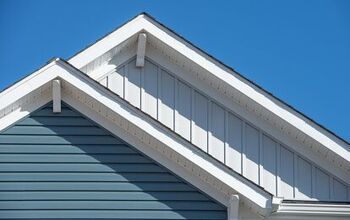






![10 Most Dangerous Neighborhoods in Baltimore [Updated]](https://cdn-fastly.upgradedhome.com/media/2023/07/31/9075655/10-most-dangerous-neighborhoods-in-baltimore-updated.jpg?size=350x220)





